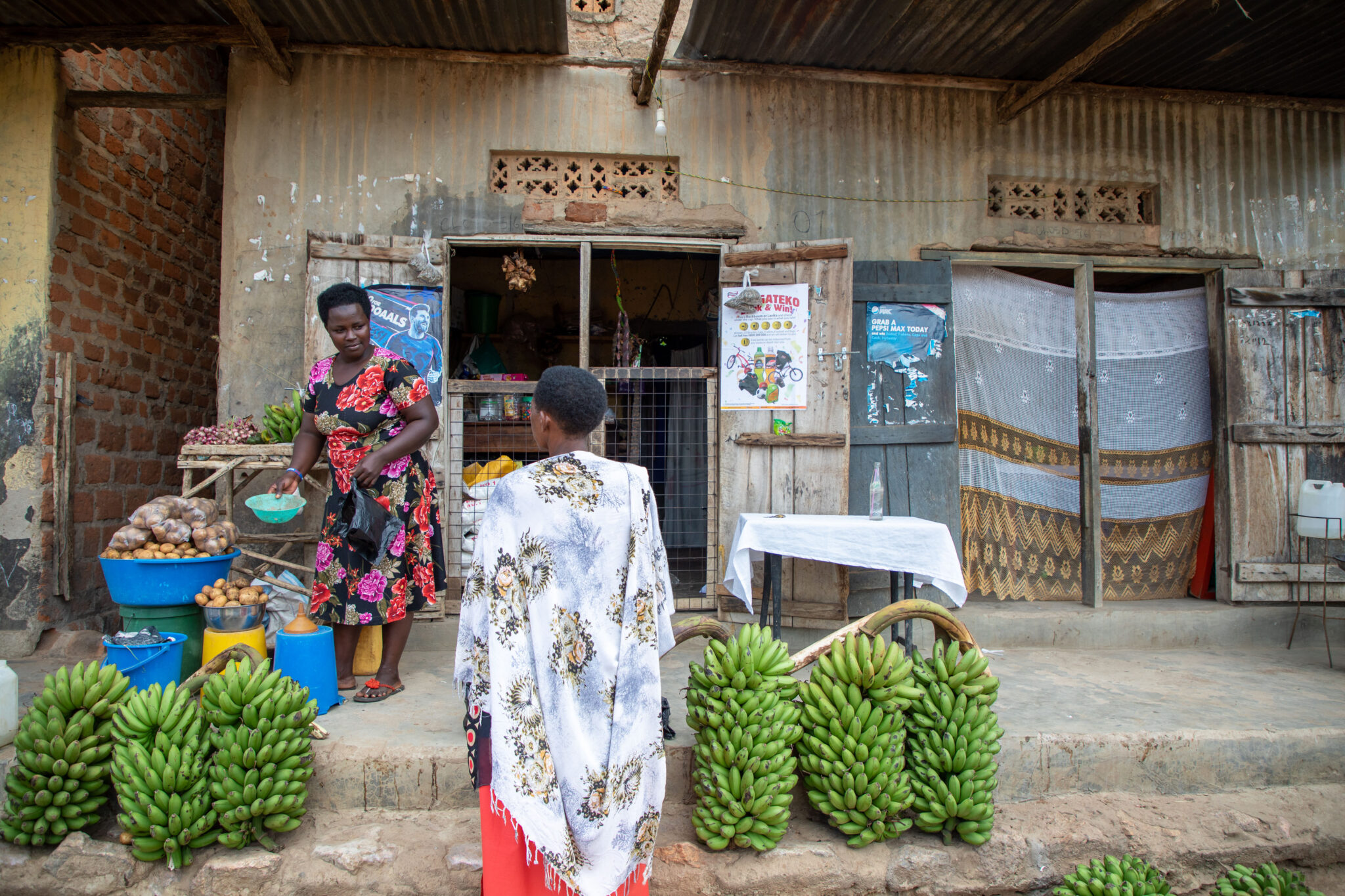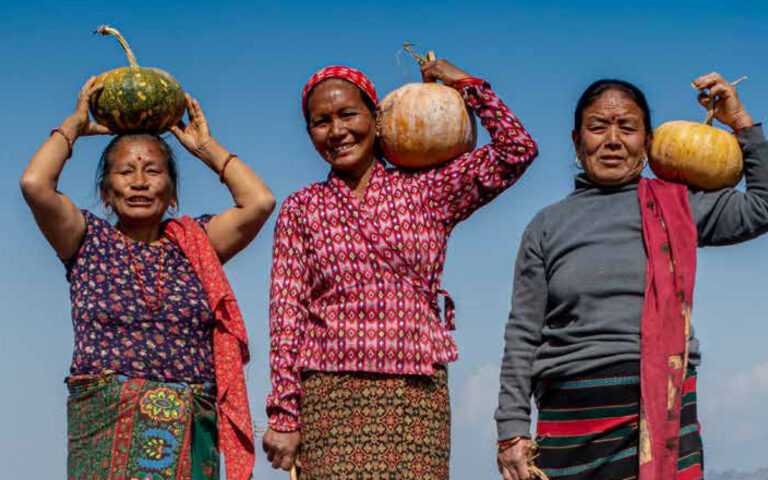Every day, women worldwide make a valuable contribution to the agricultural sector. When they are supported to overcome the many challenges they face, they are capable of creating significant change.
A staggering 80% of the world’s poor reside in rural areas and earn a living largely through agriculture, tending to crops and animals on smallholder farms — those less than 2 hectares, or about 5 acres — that are responsible for producing more than a third of the globe’s food. And much of this work is accomplished by women.
What role do women play in agriculture?
Rural women make up a quarter of the world’s population and play an integral role in global food production. The International Labour Organization estimates that women make up 41% of the world’s agricultural workforce — and even greater proportions in developing countries. In South Asia and sub-Saharan Africa, 60% of women work in agriculture.
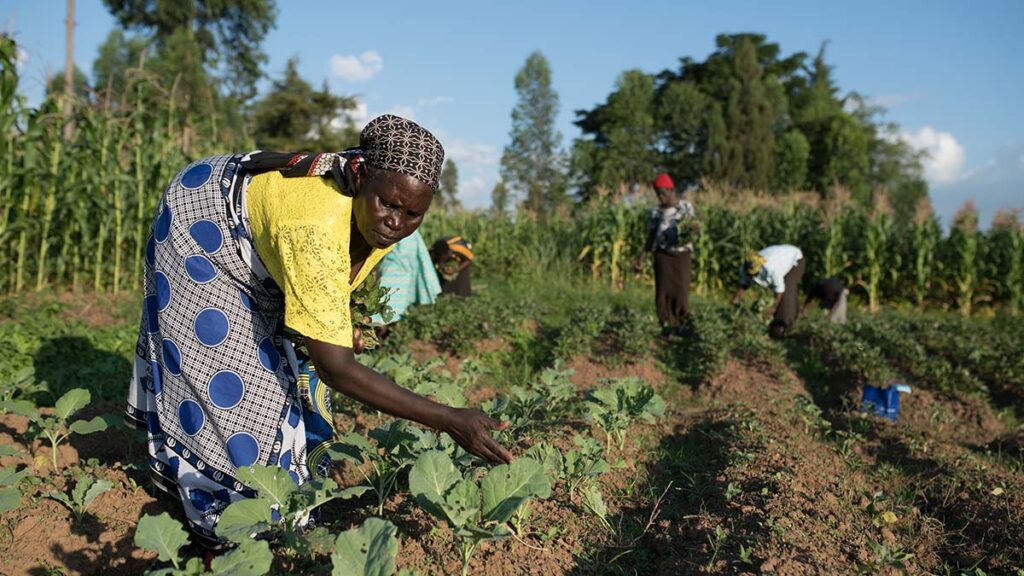
Women harvest vegetables together in Aimo, South Kagan, Kenya.
Their activities vary across and within countries, but every day, rural women make invaluable contributions to the agricultural sector — whether they spend their time preparing the fields, sowing seeds, or cultivating and harvesting crops. As stewards of their farms, they also make substantial contributions to sustainable land and natural resource management and climate resilience. As primary caregivers, they are accountable for a large portion of informal and unpaid work, responsible for most household duties. All of these efforts have a transformational impact on their family and community’s food security, nutrition and overall well-being.
What challenges do women Face in farming?
Despite the important role they play, female farmers rarely have equal access to opportunities and assets such as tools, financing, markets and education. They also have less say, if any, in decision-making around household spending and the land on which they work.
In many places, inequalities are reinforced by deeply ingrained customs and traditions. Cultural norms can keep women from venturing into new, diverse and often more profitable forms of agriculture. In Uganda, for example, raising livestock is often considered “men’s work” and women are restricted to growing crops, even though raising livestock can be a better opportunity to earn income and access additional sources of nutrition, like milk. These inequalities put women at a significant disadvantage, keeping them from building their resilience and reaching their full potential. According to The United Nations Food and Agriculture Organization, because of the challenges they face, women-run farms produce 20 to 30% less than farms run by men.
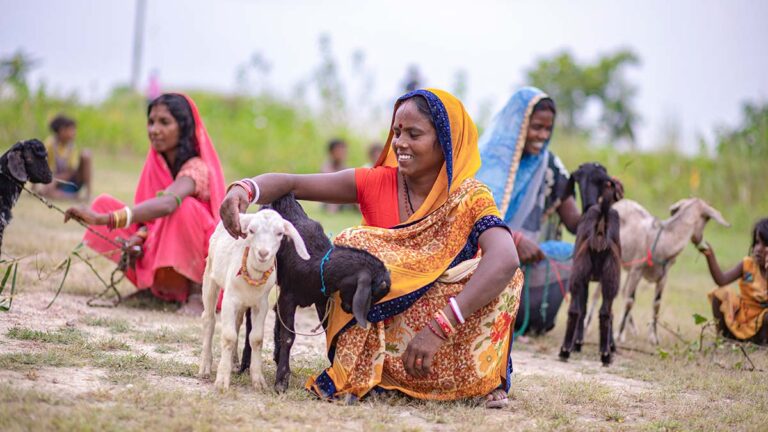
Restrictive gender norms keep women around the world from earning their own income and owning assets, like livestock. But when these barriers are removed, it can be transformational for families, communities — and countries.
Another significant barrier is land rights. Less than 15% of the world’s landowners are women. This means most women farmers aren’t able to make decisions about what they grow, how they grow it, or whether to buy or sell land. They also have less decision-making power around how household income is spent, which prevents them from being able to invest in their farms or purchase productive inputs, like goats or tools, if they want to.
Why should women be supported in farming?
Heifer has worked with smallholder farmers for 80 years and has seen firsthand the benefits of gender equality between men and women — and what happens when women have access to assets and freedom to make their own decisions.
Women typically invest more of their earnings in their families and communities than men. When women have control over their productive assets and incomes, their families and communities benefit with access to better food, education and health care.
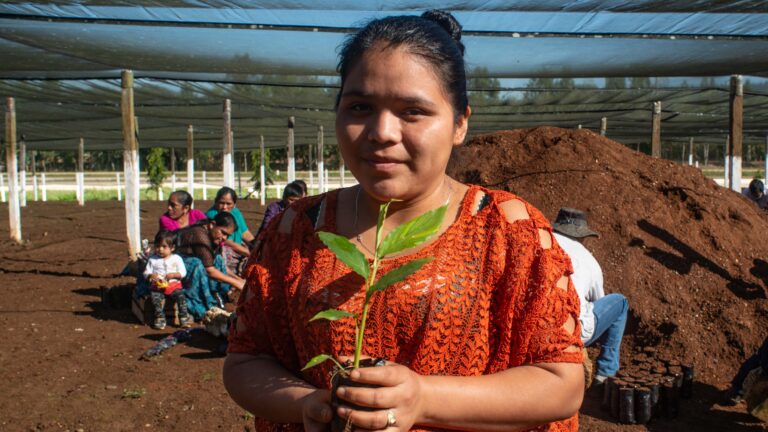
Women play a vital role in caring for their communities. In Guatemala, Heifer-supported farmers use a greenhouse to tend to seedlings of trees and spice plants, which can be planted later on as part of local reforestation efforts.
The agricultural sector at large, the wider economy and the entire global community benefit, too.
The World Food Programme estimates if women farmers had the same resources and opportunities as men, agricultural production could increase between 2.5 and 4% and the number of malnourished people would decrease 12 to 17%, lifting as many as 150 million people out of hunger and poverty. Ending hunger and poverty begins with supporting rural women.
How does heifer support women farmers?
Heifer works to close the gender gap in agriculture and create lasting change for female farmers.
In Africa, Asia and the Americas, we support women to overcome the challenges they face and access the tools and opportunities they need to improve their lives. We help them mobilize into self-help groups where they can build business skills, participate in savings and loan programs, and gain confidence to enter profitable agricultural value chains and have a meaningful voice in their communities. We connect them to other farmers, business owners and entrepreneurs to build inclusive markets that create new opportunities for others.
We also engage boys and men in education and discussions geared toward achieving greater gender equality, focused on redefining notions of masculinity and the sharing of household responsibilities.
Women farmers are incredible catalysts for social and economic change — and this work helps them build their resilience and make a difference for many seasons and generations to come.
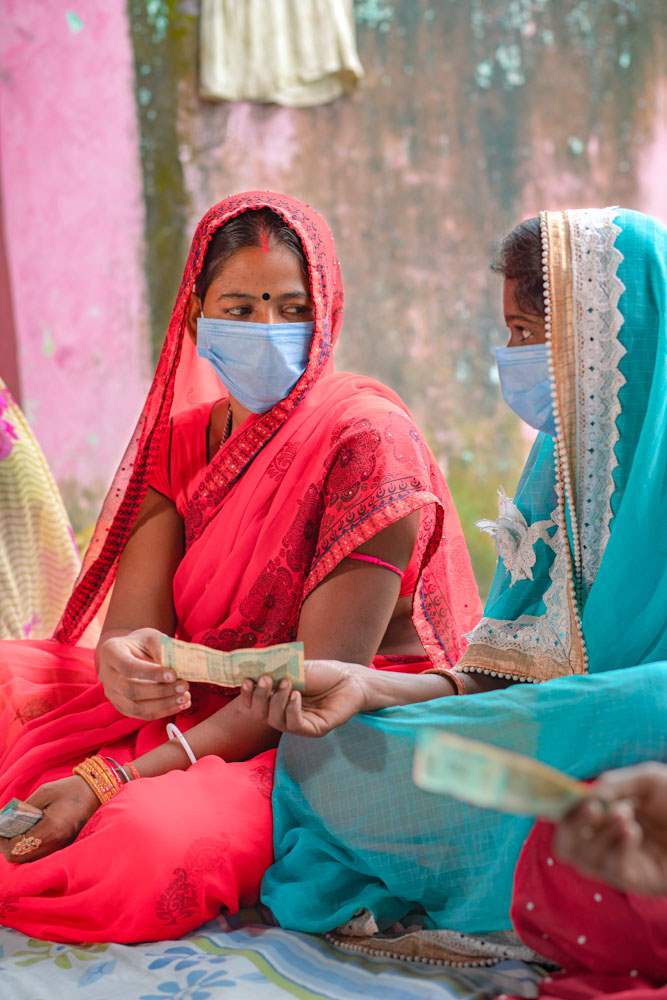
Members of a women’s group in Bihar, India save money together. Collective savings help women build financial independence. With the pooled savings, they can apply for a loan to purchase basic necessities or make new investments.


